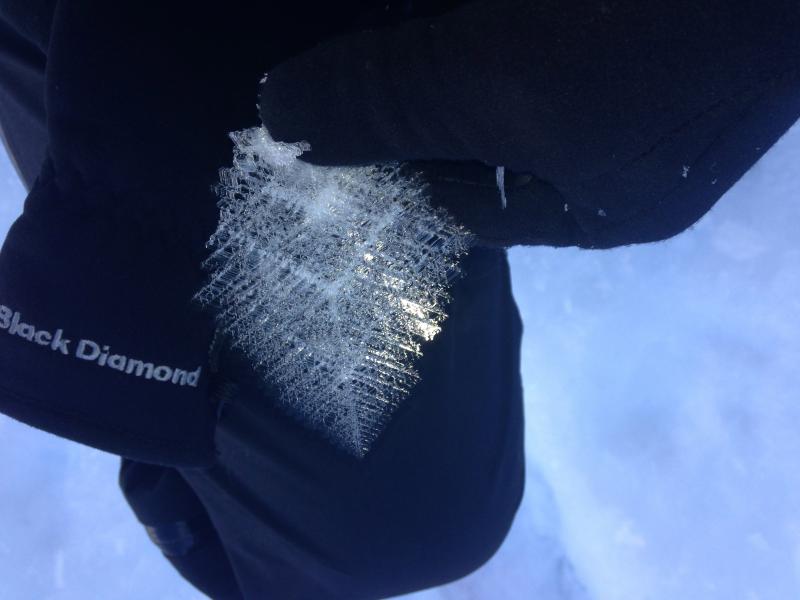
The Weed family went down to southwestern Colorado for Thanksgiving. After the feast we headed on up to Red Mountain Pass, hoping to find some soft snow to play in, and to take in the incredible scenery…
We were immediately impressed by beautiful and huge, feathery surface hoar or frost crystals growing on the snow surface on sheltered meadows. And our quest for the perfect snow feather began.
Surface hoar forms as water vapor from the air freezes into delicate two-dimensional crystals on the snow surface. Surface hoar forms at night under clear skies and in calm conditions.
The glimmering crystals truly are a natural wonder, but if a well-developed layer like this is buried and preserved before wind or the heat of the sun destroys the fragile frost crystals, it can become a dangerous persistent weak layer. Slab avalanches caused by a buried surface hoar layer collapsing and failing compressively can occur or be triggered for quite a while after the layer is buried.
This type of persistent instability can be very tricky, and avalanches involving weak surface hoar layers are notorious for catching people, even experienced backcountry travelers. Some snow scientists believe that avalanches failing on surface hoar can release on gentler slopes than those failing on other persistent weak layers.
In the afternoon on the second day of searching, Paige found it, the perfect snow feather! Every bit of 10 cms, a crystal the size of her hand! Flat, standing up, but beautifully and intricately formed by the natural process….
Despite the potential that they could be dangerous in the future, if buried intact and a slab forms on it, we found the huge feathers of Corkscrew Gulch to be incredibly beautiful and also fun to play in.







